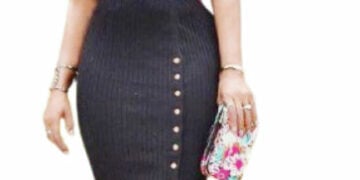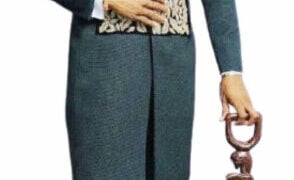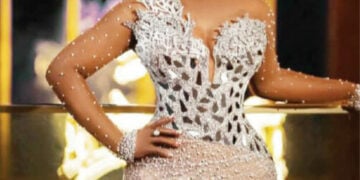Iro and Buba has been around for a long time, it has lived through quite a number of decades! It has been dreaded, loved, respected and tweaked over and over again. It has survived styles and trends, Iro and Buba is legend.
Iro and Buba
The iro and buba (pronounced “ee-roe” and “boo-bah”) are the most essential parts of a Yoruba woman’s traditional outfit. The iro and buba are essential because they are the skirt and blouse and are the basis for the outfit. Iro and Buba is an outfit traditionally worn by the Yoruba women of South/West Nigeria.
This special outfit- Iro and Buba, has been around for a long time, it has lived through quite a number of decades! It has been dreaded, loved, respected and tweaked over and over again. As a matter of fact, it has survived styles and trends, Iro and Buba is legend.
It consists of Iro: the large fabric wrapped around the body. The iro has a literal meaning ‘ the act of wrapping’, the Buba; a voluminous blouse, Ipele; (a shawl that goes around the waist), Iborun: A shawl/Wrap usually hung on the shoulder and gele; headgear or head tie.
A Journey Through Decades
In the 50s and early 60s, Iro and Buba was made with cotton and Aso-oke, with the wrapper tied across the chest by some women. Aso-oke is a hand-loomed woven cotton cloth made and worn by the Yoruba people of Nigeria and was mainly worn for special occasions.
In later years, the Lace fabric became popular in Nigeria and iro and buba was not left out of the party. The lace fabric was sometimes used to make the full attire or used for just the buba, whilst aso-oke or damask was used for the wrapper, gele and ipele.
The Iro and Buba later became embraced by non-Yorubas and was very popular before the influx of the western dressing.
Interestingly, the daring fashion of the swinging 60s also influenced Nigerian fashion. It was then that the Adire fabric became popular again, it also brought to life what is popularly known today as the “Oleku style”. This meant the buba lengths grew shorter, and the wrapper lengths also grew shorter, the ipele and iborun were in some cases ditched giving a more modern look.
Since then, the Iro and Buba has remained popular and has witnessed even more variations. After the Oleku frenzy came the knot/silk phase, followed by the Velvet wrapper trend and then the french lace trend. The Iro and Buba was now being made into stylish blouses whilst the wrapper was being tied in a fashionable knot.
Iro and buba has been transformed into a more sophisticated attire, the blouses are now fitted and the neckline now range from off-shoulder to sweet-heart neck, cowl neck, collared, boat even to a plunge-neck. The sleeves have also gone through their own transformation, the now smaller wrappers are tied with a satin fabric into a lovely bow.
This traditional outfit has been given a contemporary twist and these days, the younger generation often do away with the pele, iborun and gele and make the iro and buba more fitted, more varied and more stylish.
The options are endless and you can make it to suit your own tastes and figure with beaded blouses, cropped wrappers and sleeves, modern-the ubiquitous sarong-style wrapper, using chiffon, silk, satin, linen, in a monochrome look, with block colours, with intricate patterns. Some designers have even come up with all-in-one dresses which when worn, look like the iro and buba combo.





